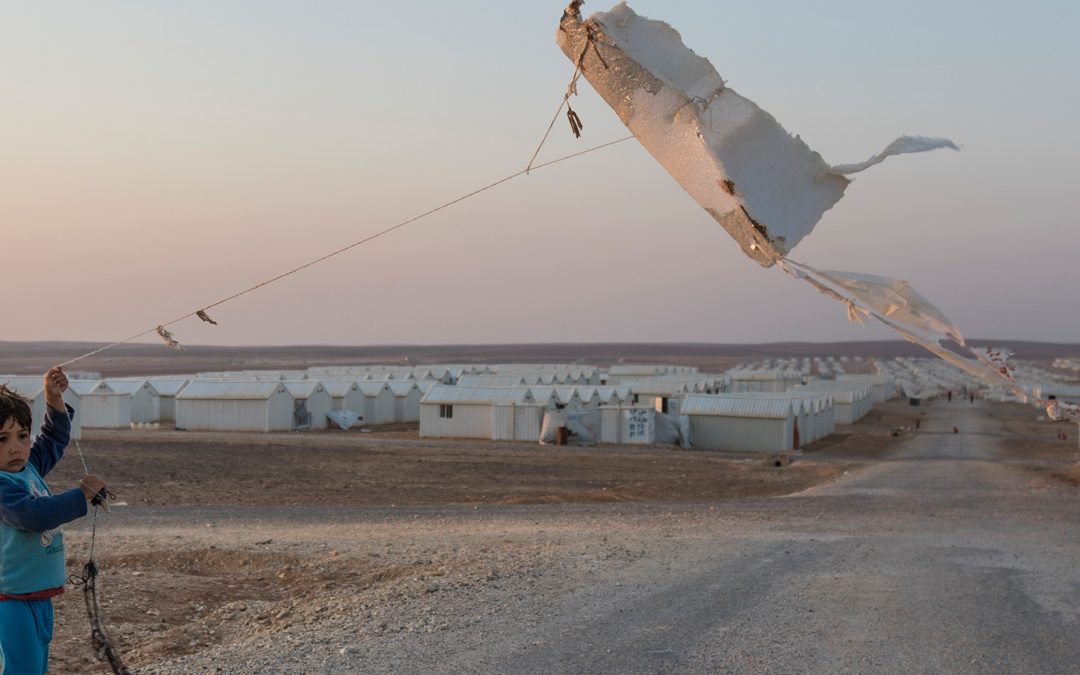This is an excerpt from UNHCR’s recently released report: Innovation at UNHCR 2014. This report highlights and showcases some of the innovative approaches the organization is taking to address complex refugee challenges.
The word “engagement” can be a bit of a headscratcher, but the decision to use this word and not “communication” to describe the activities of this pillar is a very strategic one.
At its very core, engagement implies a two-way relationship and exchange of ideas, while communication suggests a one-way transfer of information with less focus on relationship building. In short, communication creates a monologue, while engagement has a distinct focus on fostering dialogue.
Why does this distinction matter?
It matters because innovation cannot thrive in silos. Innovation thrives when there is an enabling environment comprised of several actors across sectors who talk to one another and share ideas so that efforts aren’t duplicated. And, for this ecosystem to develop and mature, we need mechanisms that facilitate collaboration and knowledge-sharing among bureaux and divisions. We need to foster and build relationships, both inside and outside UNHCR.
Relationships matter because people are at the core of innovation. It is people who have ideas about how our organization can operate more efficiently and sustainably. And, it is people who will then develop these ideas from concepts to solutions.
To truly foster the spirit of innovation that exists within UNHCR, we have to engage people. We can’t just talk at them; we have to create channels that allow them to talk back to us and to one another.
We also need to engage current and potential partners who make up a crucial part of the ecosystem that enables innovation. When we create dialogue with our partners, we show them that their value to us as an organization goes beyond financial commitments. We show them that their expertise is equally important, and that we see them as collaborators in generating innovative solutions to the complex challenges of persons of concern.
The Engagement Pillar focused on testing various channels and tools to drive dialogue and idea exchange among colleagues and partners throughout 2014. A big part of our focus for 2014 was developing a subdomain of UNHCR’s website specifically dedicated to capturing and documenting innovations within the organization. Innovation.unhcr.org launched in late 2014 with a modest collection of innovations in-house and 2015 will see a focus on capturing and documenting innovations occurring in UNHCR operations worldwide. Documenting innovations in-house will be a crucial first step to enable knowledge-sharing and collaboration across bureaux and divisions.
UNHCR Ideas – the organization’s online idea management platform – continued in 2014 with 4 new Challenges. As we continued to test the platform, we saw its value as a powerful tool to engage colleagues in crowdsourcing innovative solutions to the challenges faced by persons of concern. In 2015, we will continue to test and prototype winning ideas in field operations, and we will explore how we can make the platform more of a service to UNHCR.
We also tested the use of social media in a variety of contexts throughout 2014. Beyond sharing updates on the work of UNHCR Innovation, we sought to use social media as a means to drive conversations and exchange ideas. In 2014 we collaborated with the Energy and Environment Unit to launch a series of Twitter chats on finding more sustainable ways to meet refugees’ energy needs. We also tested the viability of Google Hangouts as a tool for engaging innovators inside and outside of UNHCR. What we learned from the Twitter chats and Google Hangouts is that people are excited to learn more about UNHCR’s response in a conversational format. We also learned that social media could serve as yet another avenue to generate ideas, learn about existing solutions, and glean lessons from the broader humanitarian community.
Fostering the culture of innovation that exists within the organization won’t happen magically. It will require a sincere belief that everyone in UNHCR can make real and meaningful contributions to the innovation process. And, that everyone can, in fact, be an innovator.
We’re always looking for great stories, ideas, and opinions on innovations that are led by or create impact for refugees. If you have one to share with us send us an email at [email protected]
If you’d like to repost this article on your website, please see our reposting policy.

